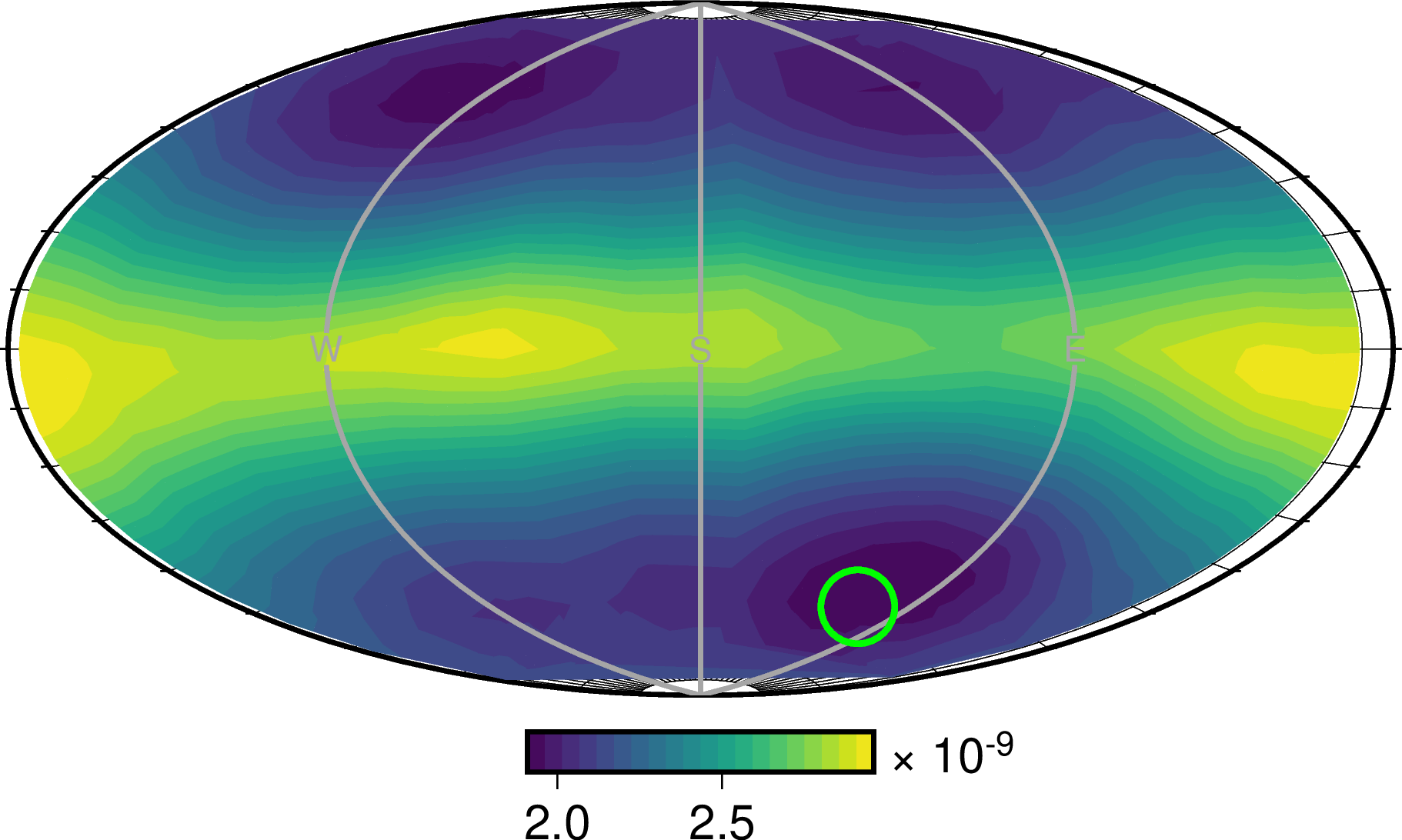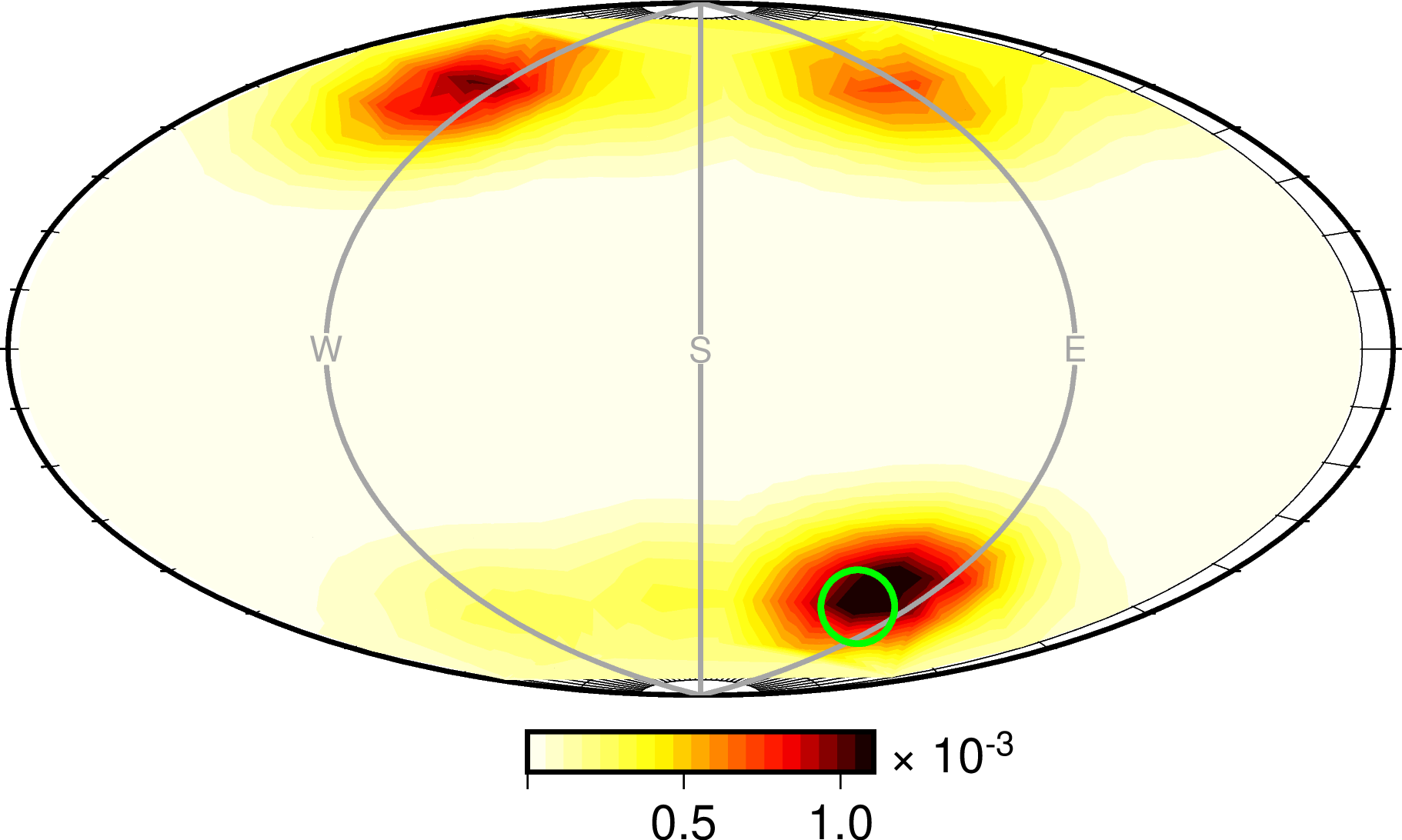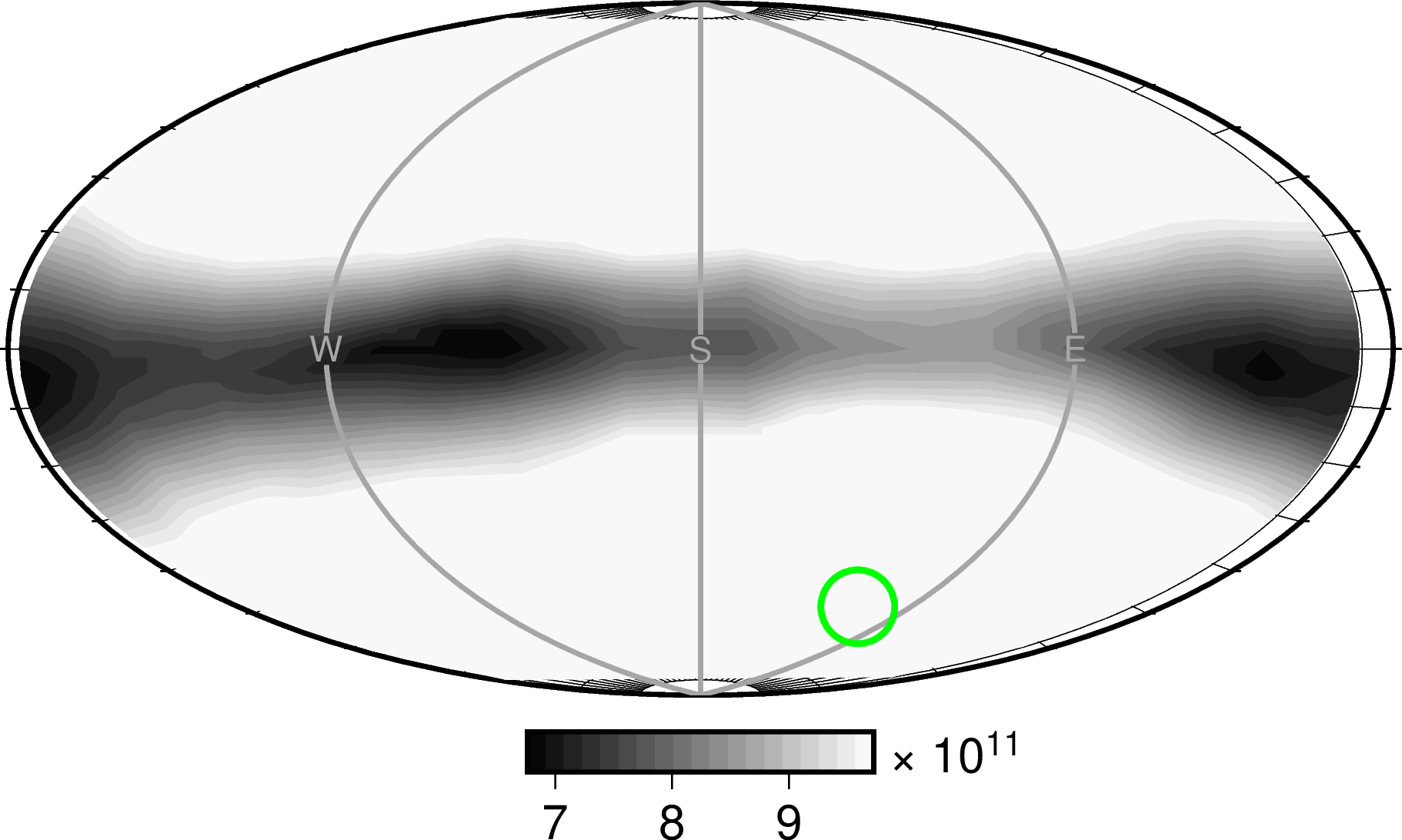Plotting force results¶
Suppose we are running a force grid search:
ds = grid_search(data, greens, misfit, origins, sources)
After the above command finishes, the data structure ds will contain all the forces and corresponding misfit values.
For a grid of regulary-spaced forces, ds may look something like:
>>> print(ds)
Summary:
grid shape: (200, 25, 25, 1)
grid size: 125000
mean: 2.984e-09
std: 1.428e-10
min: 2.605e-09
max: 3.339e-09
Coordinates:
* F0 (F0) float64 1e+11 1.012e+11 1.023e+11 ... 9.772e+11 9.886e+11
* phi (phi) float64 7.2 21.6 36.0 50.4 ... 309.6 324.0 338.4 352.8
* h (h) float64 -0.96 -0.88 -0.8 -0.72 -0.64 ... 0.72 0.8 0.88 0.96
* origin_idx (origin_idx) int64 0
Note
Force grids are implemented using parameters F0, phi, h, which are related to r, phi, theta spherical coordinates (physics convention) by F0 = r, phi = phi, h = cos(theta). In addition, F0, phi, h are related to geographic directions by these formulas.
Misfit values¶
To plot the misfit values returned by the grid search, we can pass ds to a plotting utility as follows:
from mtuq.graphics import plot_misfit_force
plot_misfit_force(filename, ds)

Maximum likelihoods¶
If a data variance estimate var is available, then misfit values can be converted to likelihood values. In the following approach, a two-dimensional likelihood surface is obtained by maximimizing over magnitude:
from mtuq.graphics import plot_likelihood_force
plot_likelihood_force(filename, ds, var)

Tradeoffs between force orientation and magnitude¶
To see how the magnitude of the best-fitting force varies with respect to orientation, we can use the following:
from mtuq.graphics import plot_magnitude_tradeoffs_force
plot_magnitude_tradeoffs_force(filename, ds)

Source code¶
[script to reproduce above figures]
Users can run the script immediately after installing MTUQ, without any additional setup.